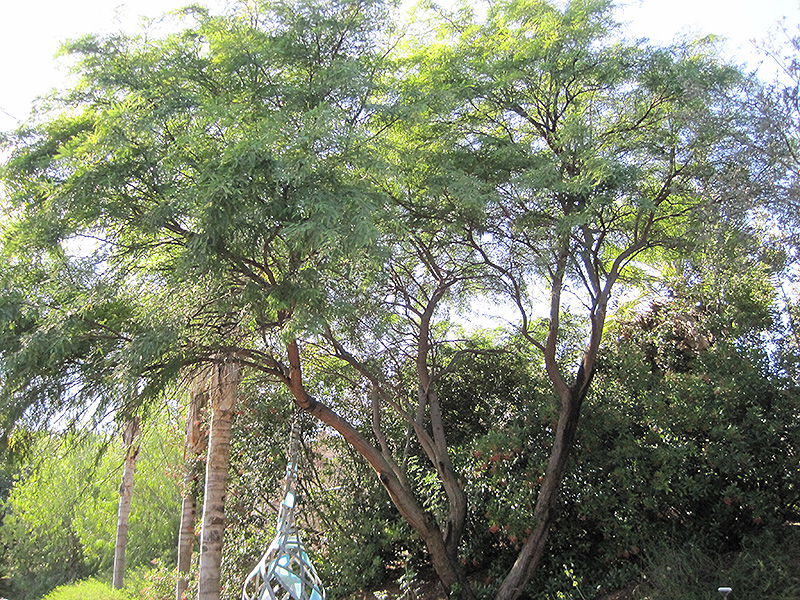Height: 30 feet
Spread: 20 feet
Sunlight:
![]()
Hardiness Zone: 8a
Description:
This spiny, deciduous tree rapidly forms a dense spreading canopy of crooked, drooping branches with feathery foliage; fluffy clusters of yellow flowers in spring, followed by large tan pods; highly adapted to arid environments
Ornamental Features
Western Honey Mesquite is draped in stunning clusters of yellow catkins along the branches in mid spring. It has attractive light green deciduous foliage. The small narrow pinnately compound leaves are highly ornamental but do not develop any appreciable fall color. The fruits are showy tan pods displayed from early summer to early fall.
Landscape Attributes
Western Honey Mesquite is a dense multi-stemmed deciduous tree with a more or less rounded form. Its relatively fine texture sets it apart from other landscape plants with less refined foliage.
This tree will require occasional maintenance and upkeep, and should only be pruned after flowering to avoid removing any of the current season's flowers. It is a good choice for attracting birds and bees to your yard. Gardeners should be aware of the following characteristic(s) that may warrant special consideration;
- Spiny
Western Honey Mesquite is recommended for the following landscape applications;
- Shade
- Mass Planting
- Hedges/Screening
- Windbreaks and Shelterbelts
Planting & Growing
Western Honey Mesquite will grow to be about 30 feet tall at maturity, with a spread of 20 feet. It has a low canopy with a typical clearance of 5 feet from the ground, and is suitable for planting under power lines. It grows at a fast rate, and under ideal conditions can be expected to live for 60 years or more.
This tree should only be grown in full sunlight. It prefers dry to average moisture levels with very well-drained soil, and will often die in standing water. It is considered to be drought-tolerant, and thus makes an ideal choice for xeriscaping or the moisture-conserving landscape. It is not particular as to soil type or pH. It is highly tolerant of urban pollution and will even thrive in inner city environments. This species is native to parts of North America..

